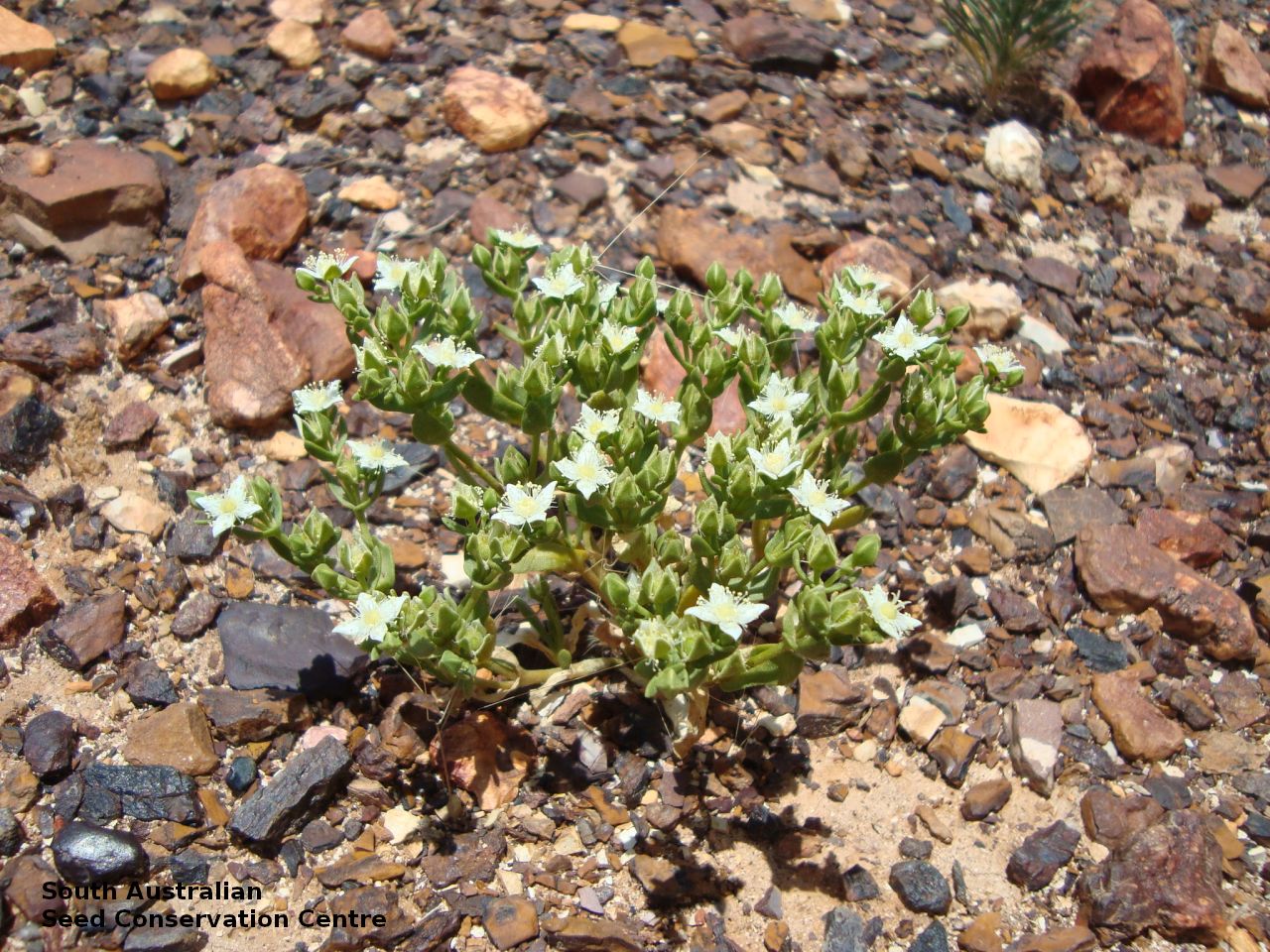
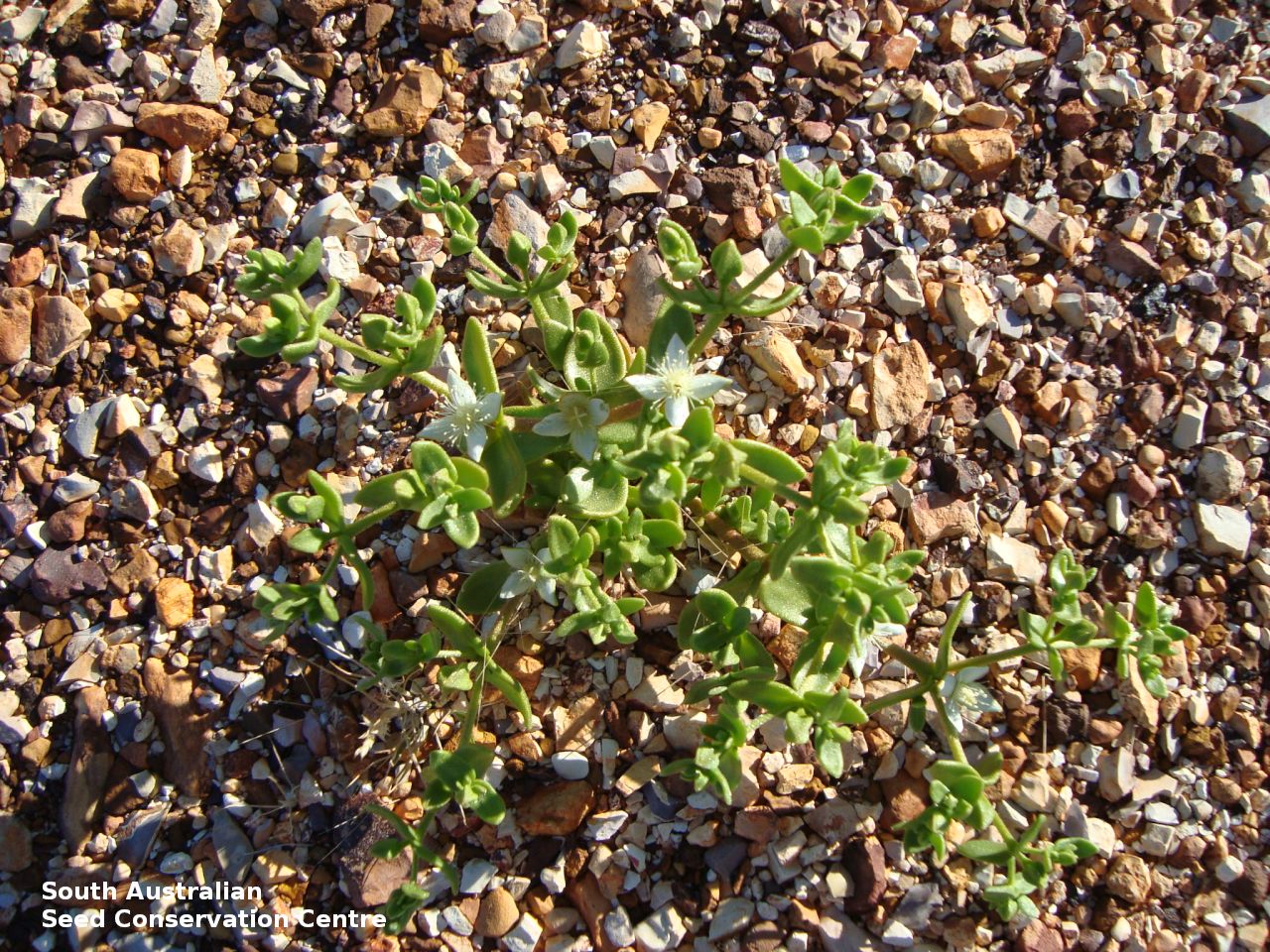
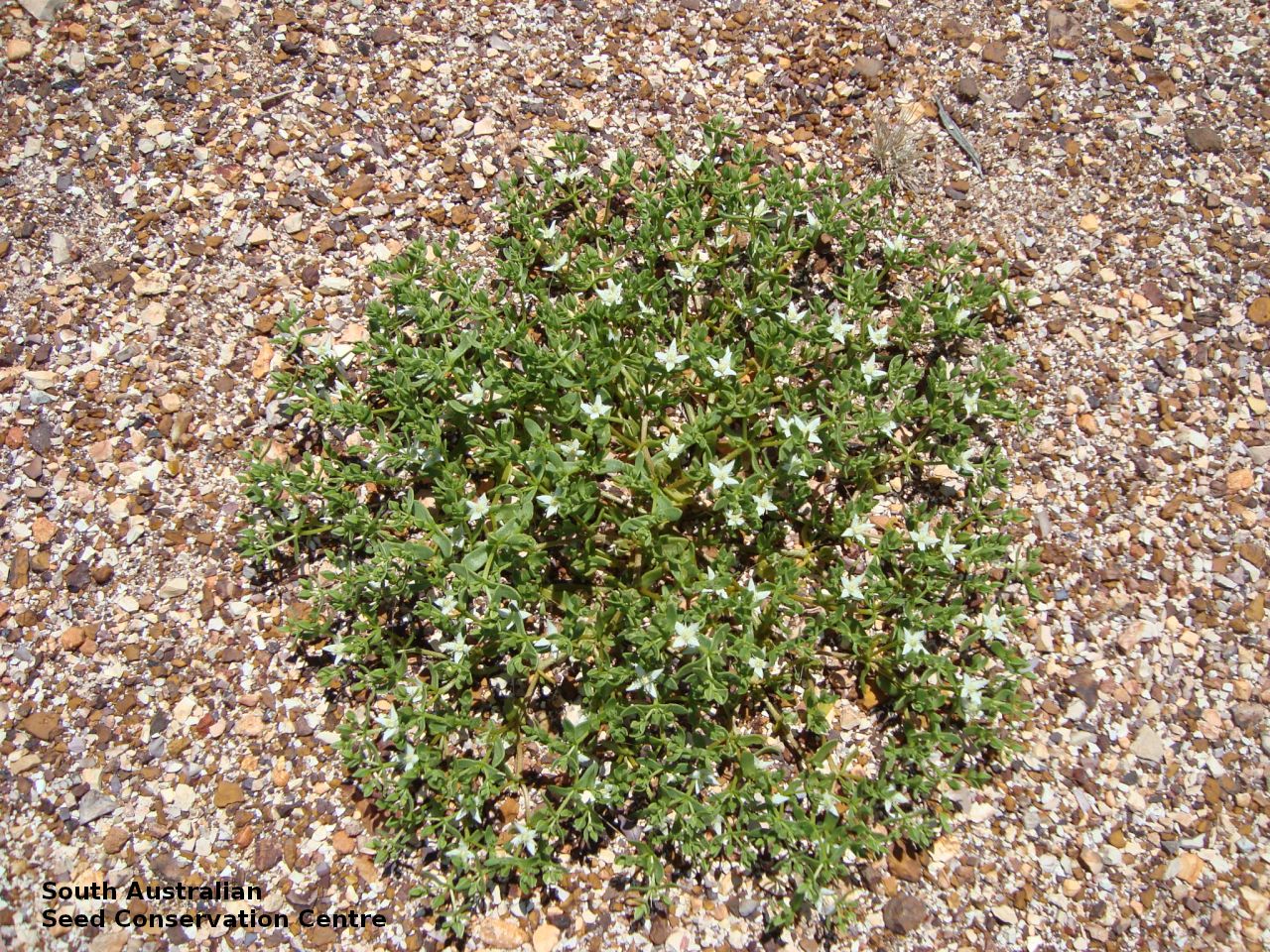
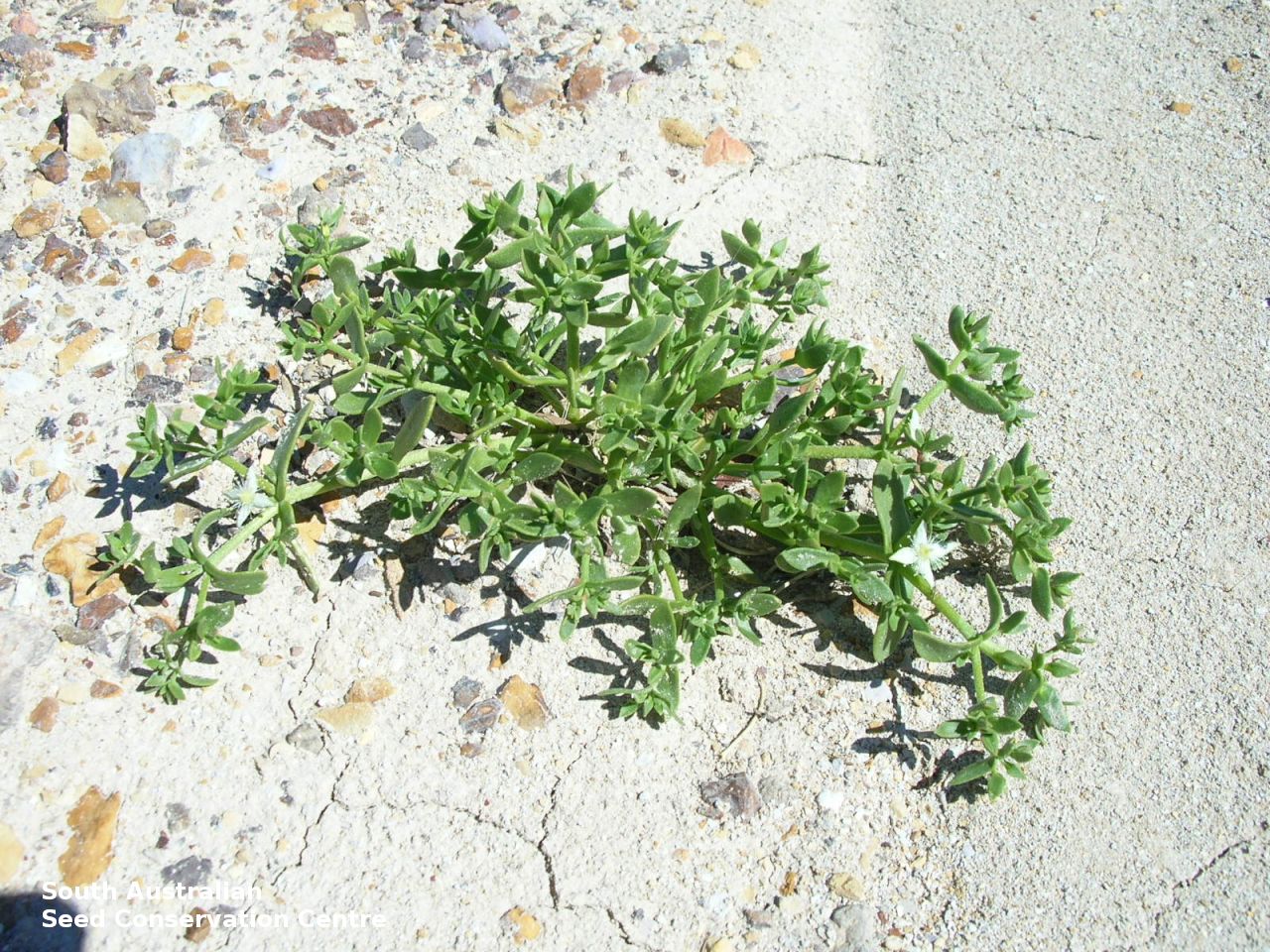
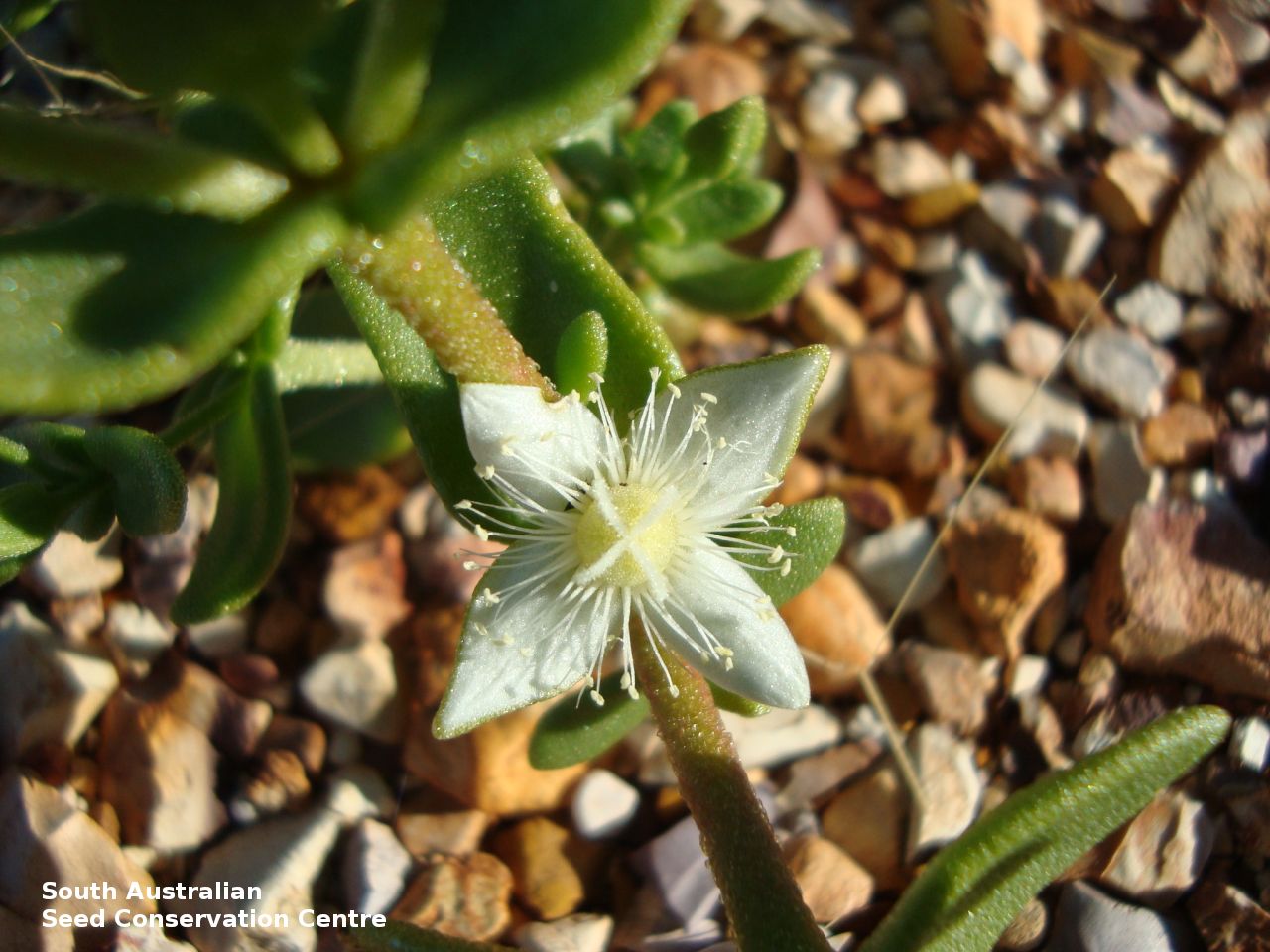
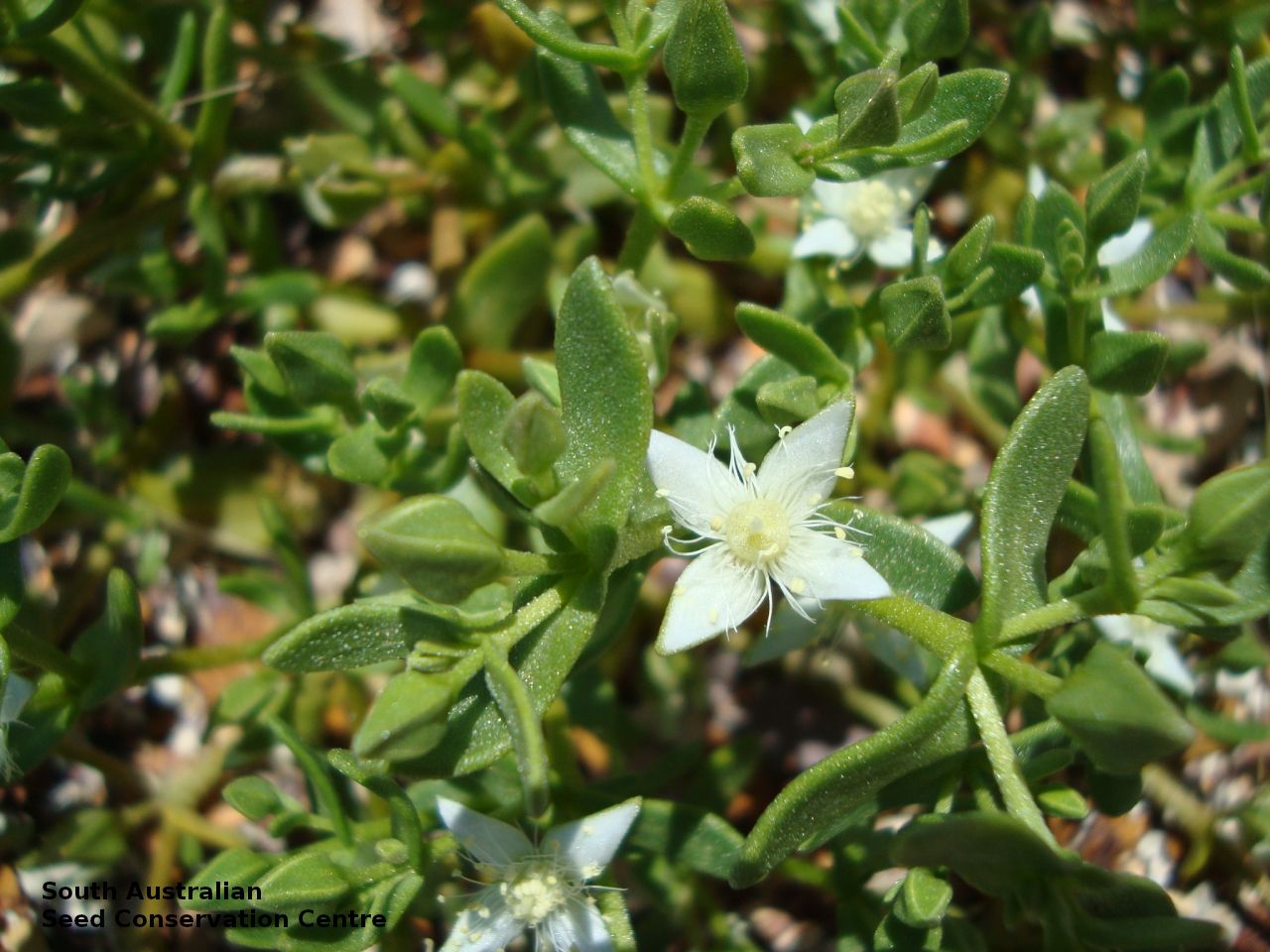
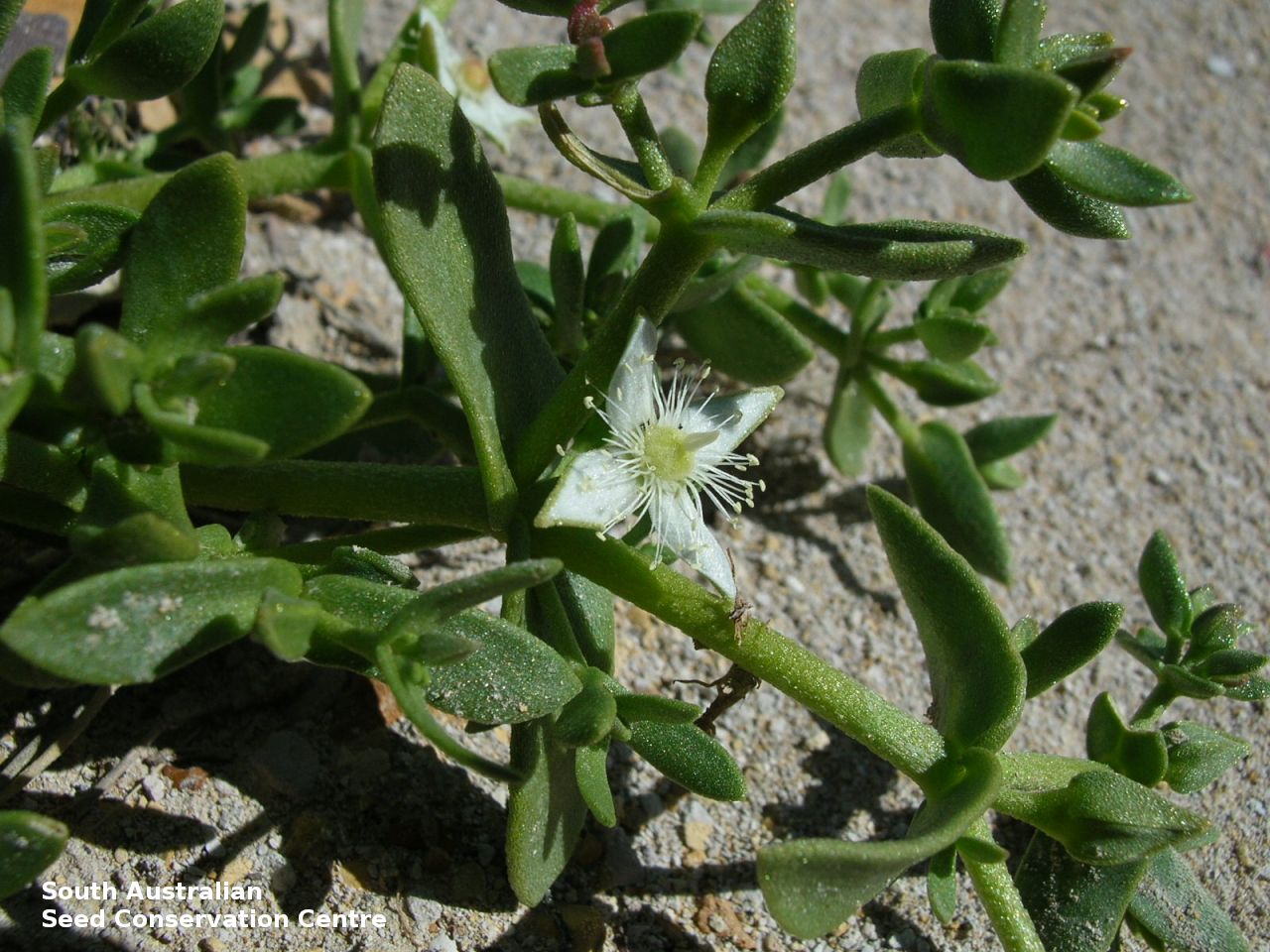
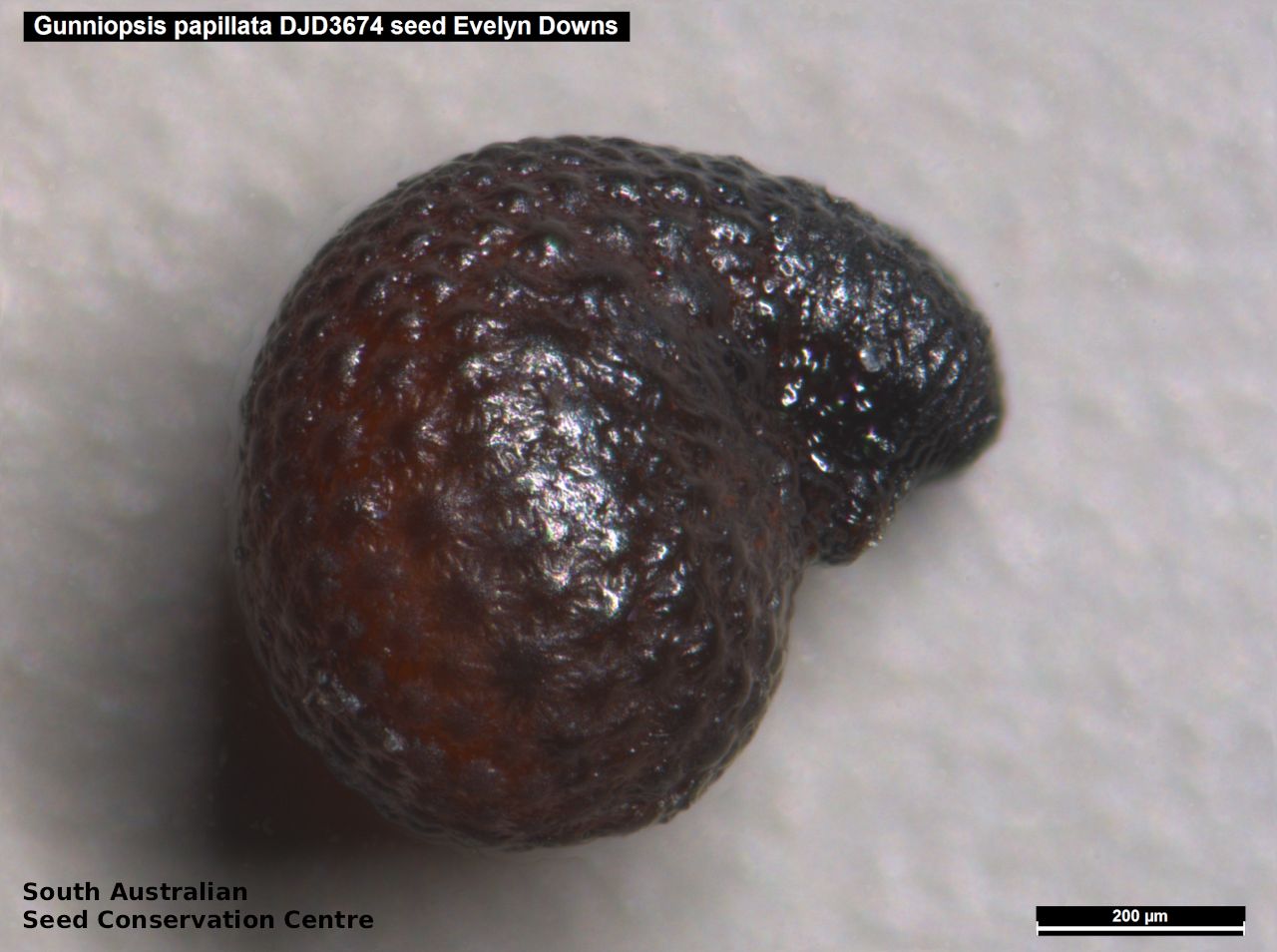
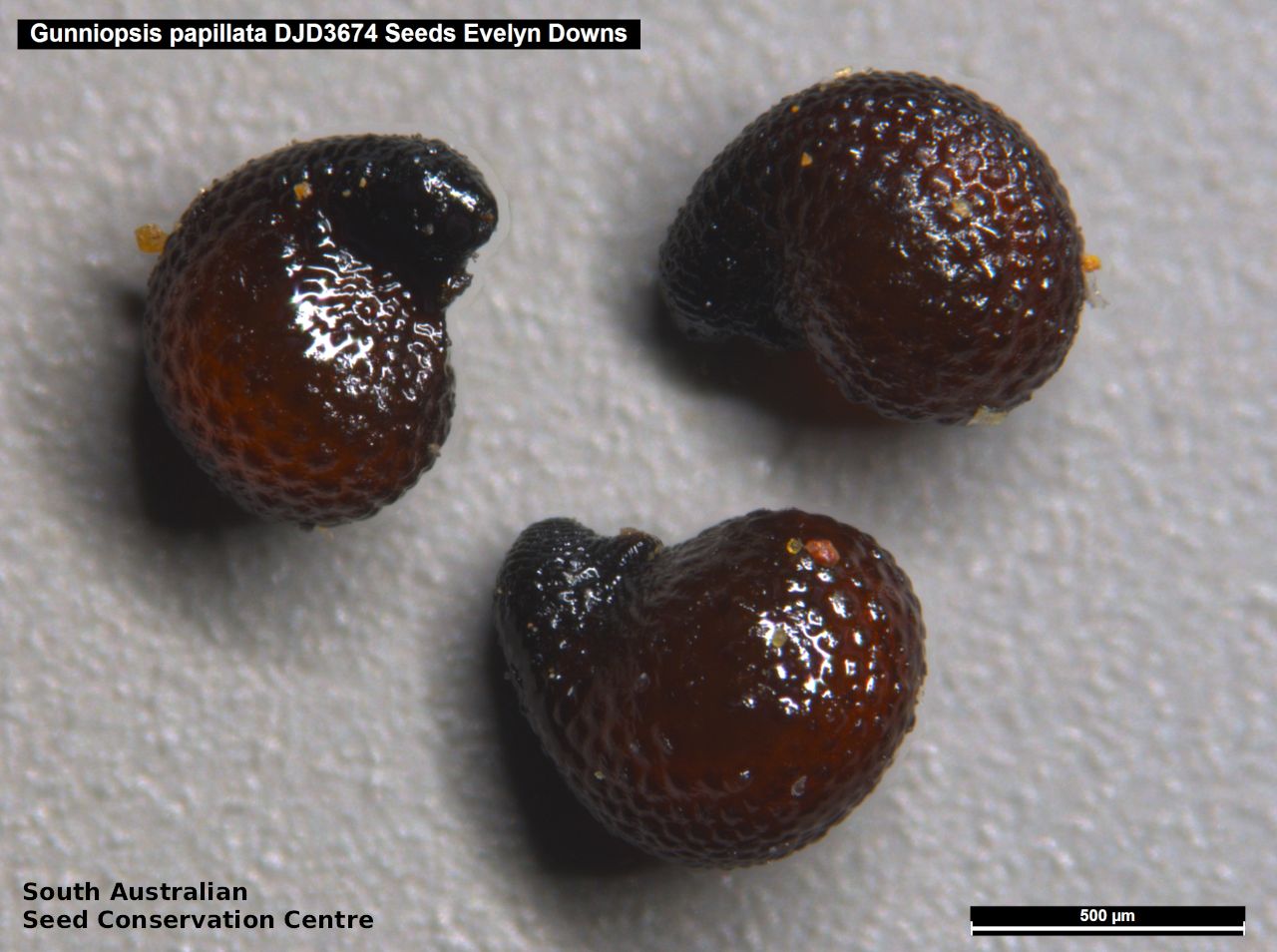
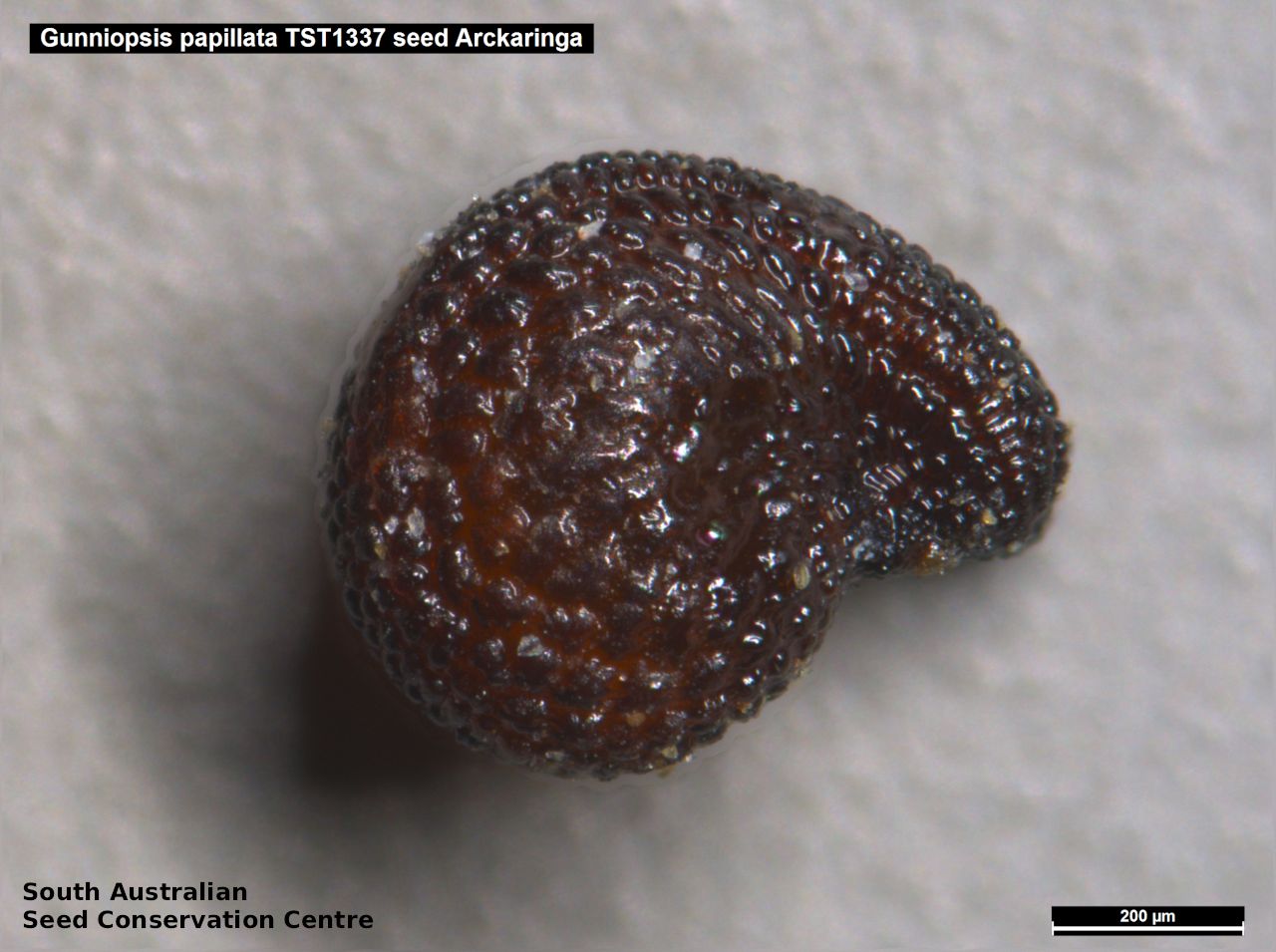
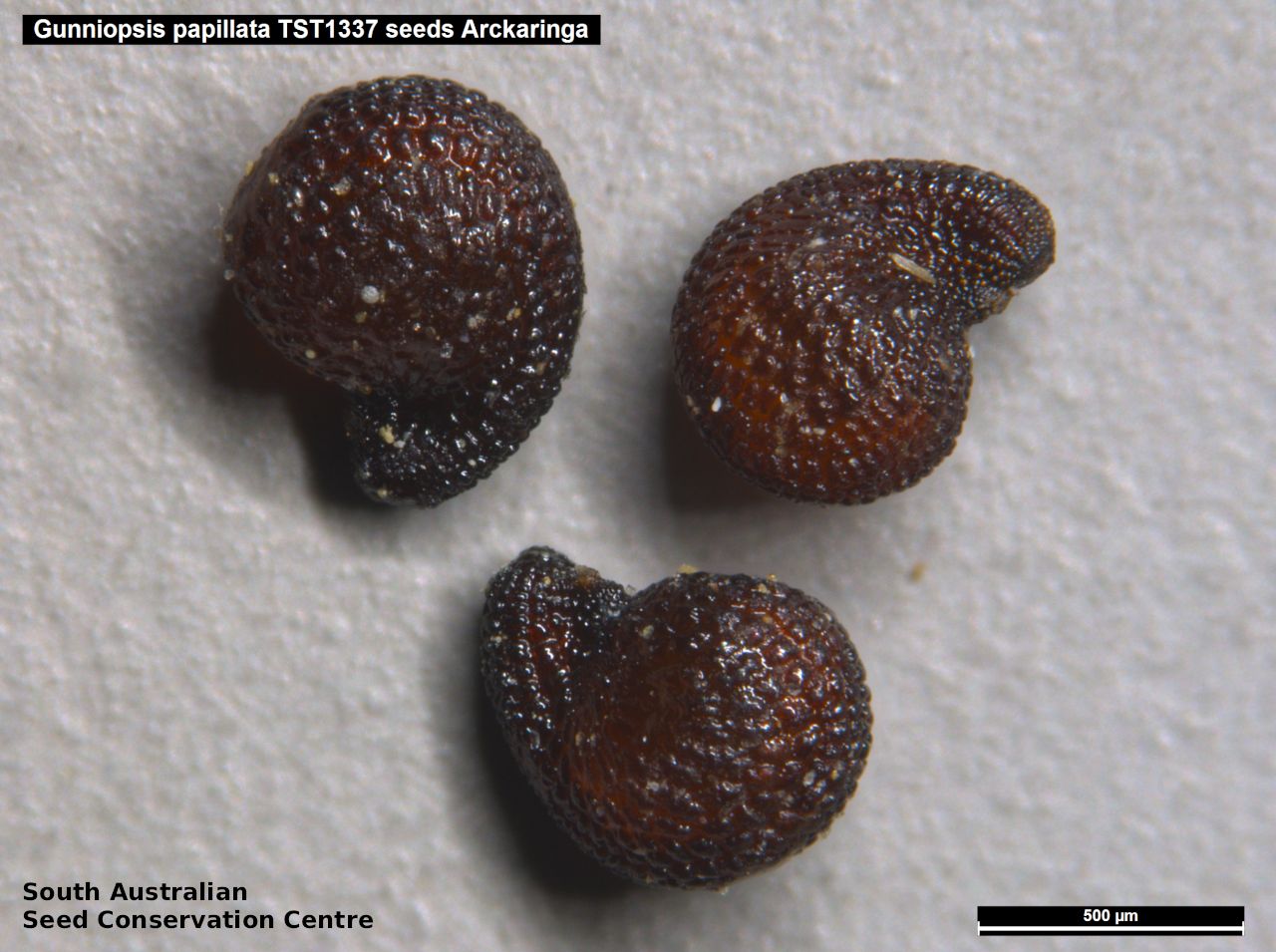
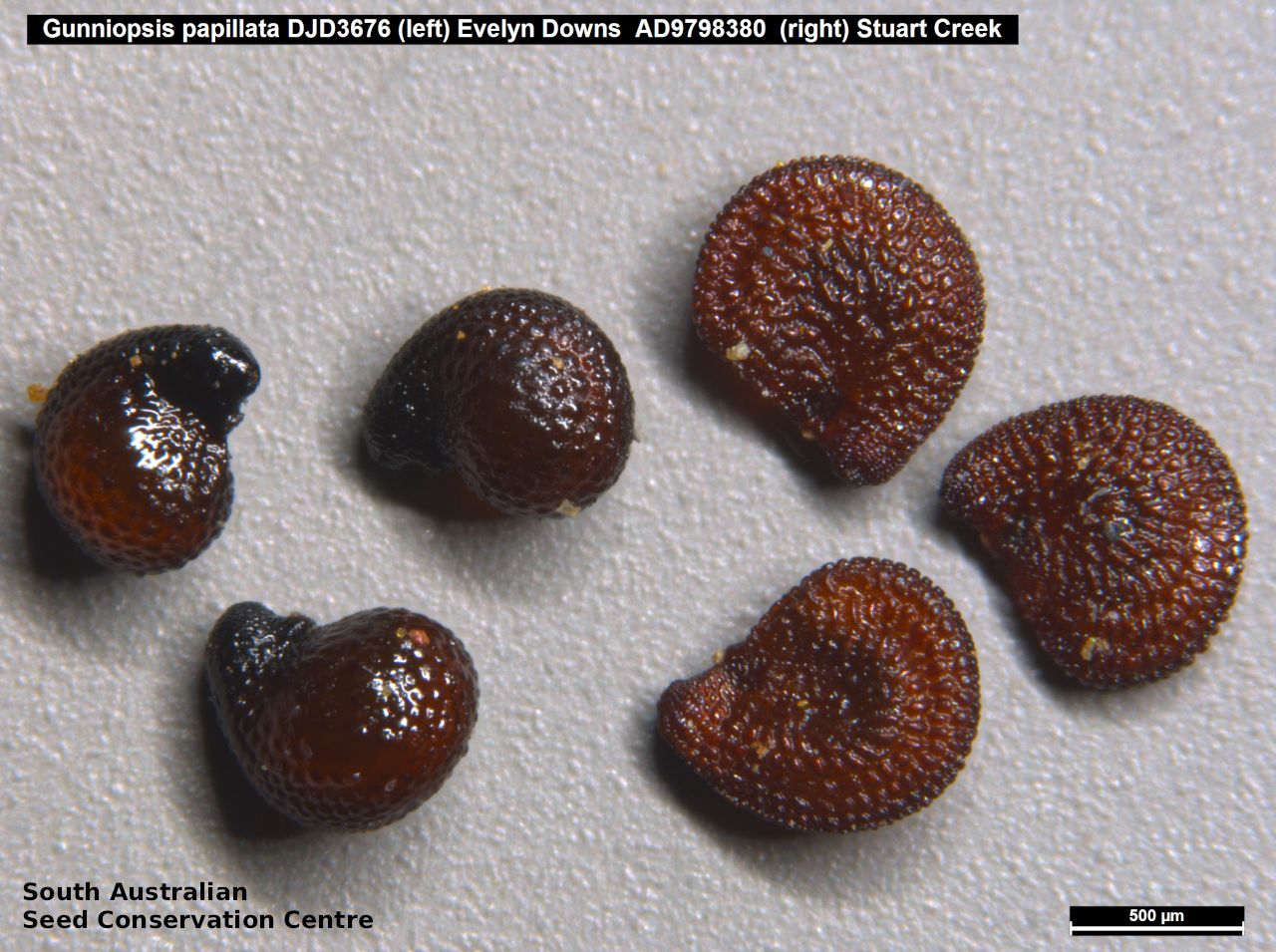
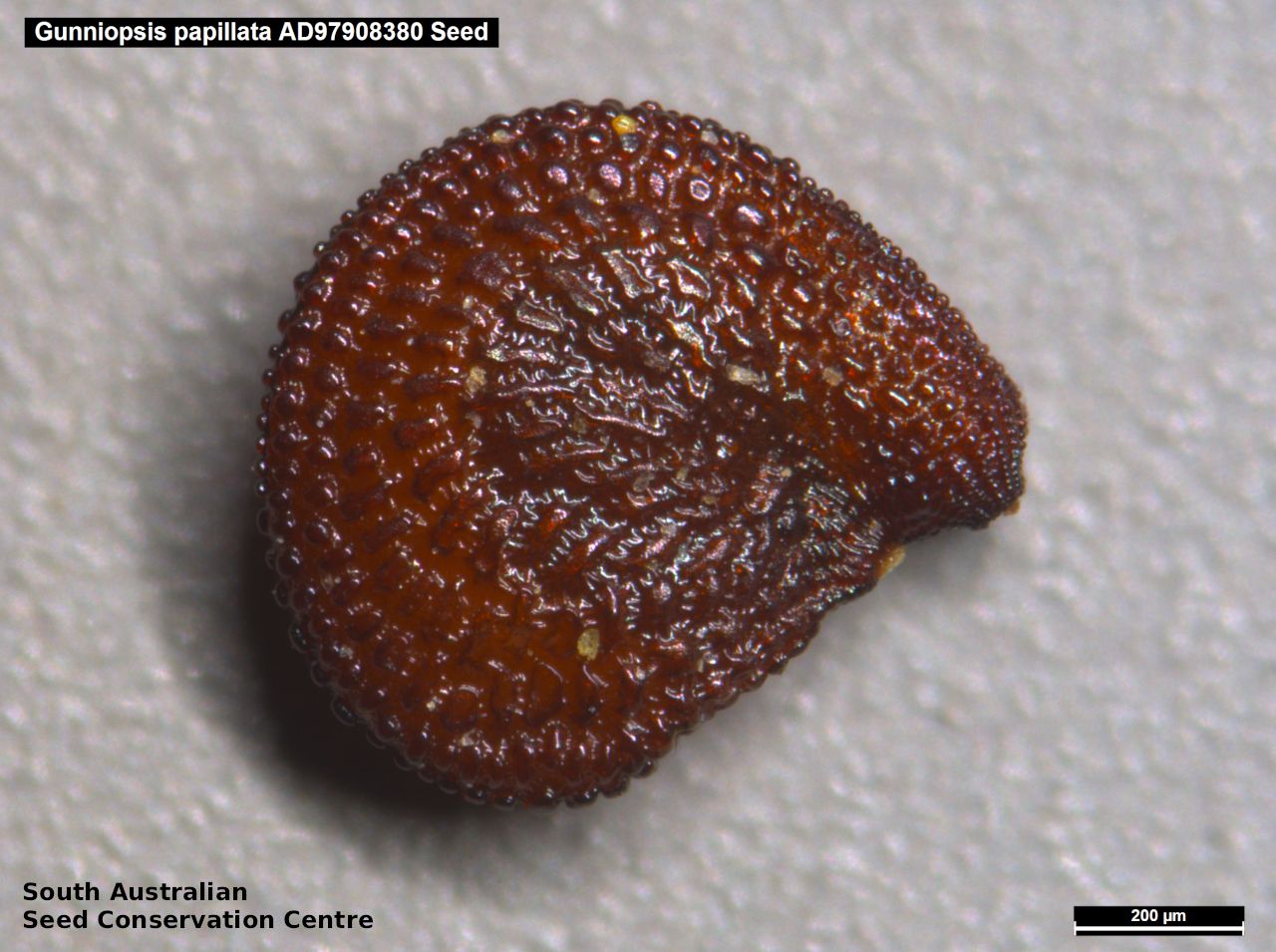
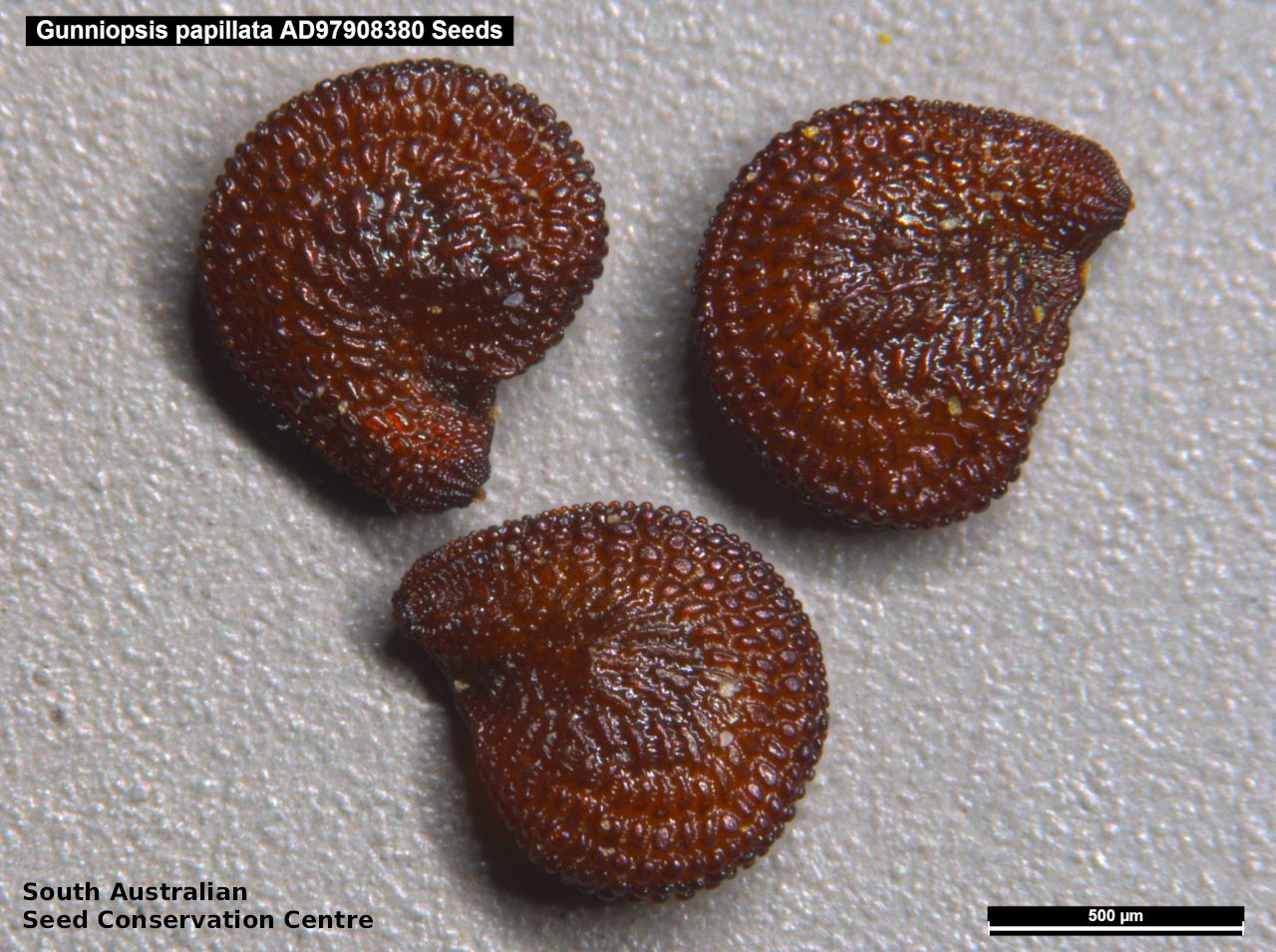
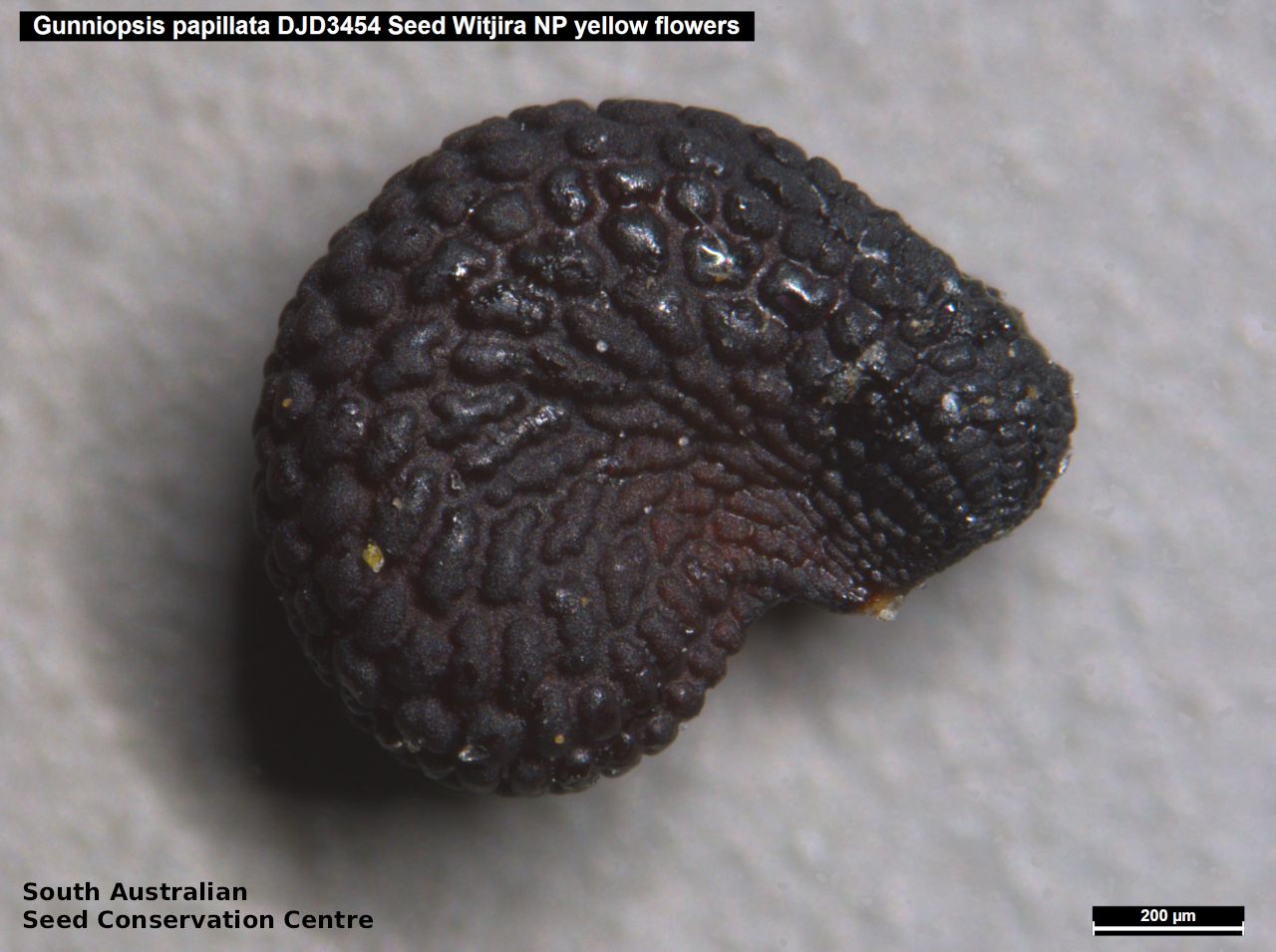
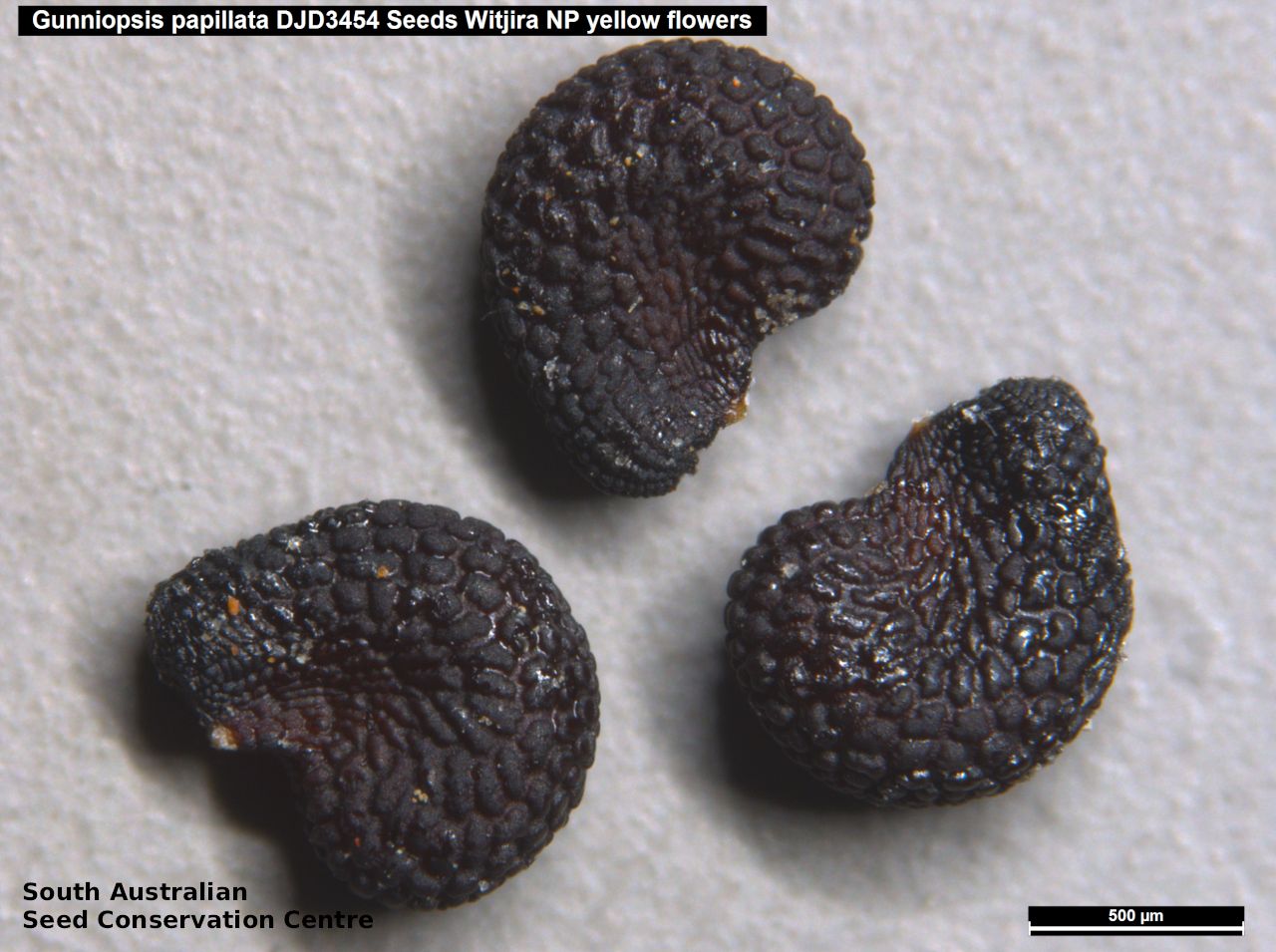

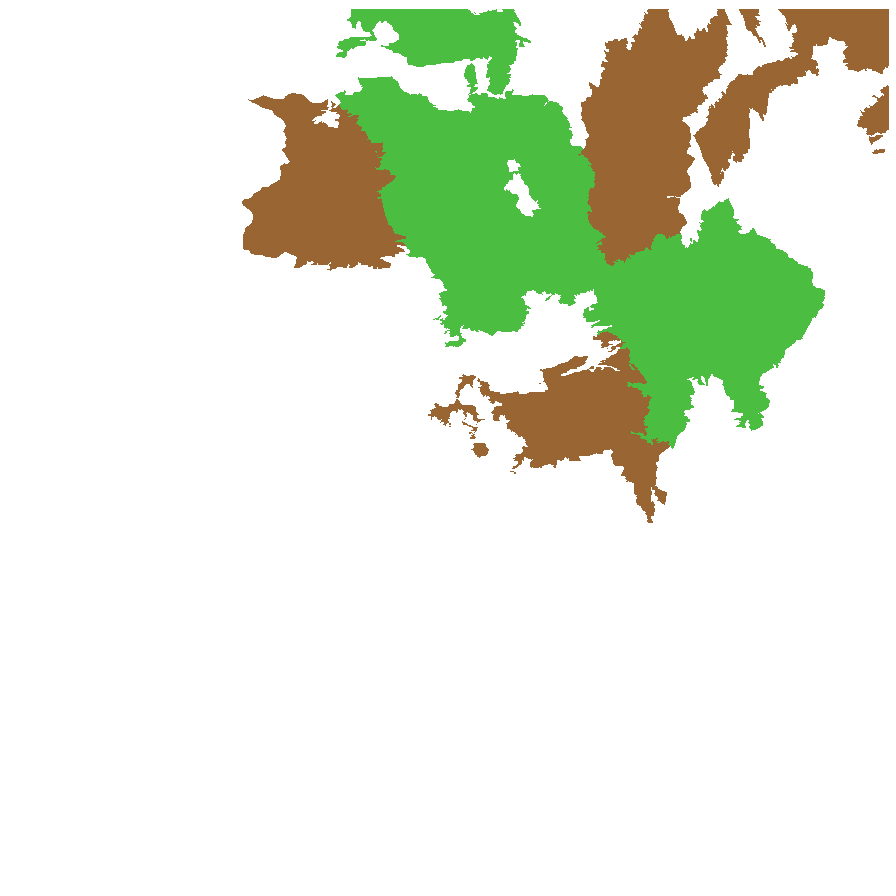
Botanical art
Prior names
Aizoon zygophylloides, partly
Etymology
Gunniopsis from the genus Gunnia, named after Ronald Campbell Gunn (1808-1881), a Tasmanian botanist, and from the Greek 'opsis', meaning resembling, alluding to the resemblance of this genus to the genus Gunnia. Papillata from the Latin 'papillatus' meaning to have papillae, alluding to the papillae which cover the branches and leaves.
Distribution and status
Found in central and northern South Australia growing along ephemeral creek beds, swales and in depressions on gibber flats on saline loams or clays. Also found in Northern Territory, Queensland and New South Wales. Native. Common in South Australia. Rare in Northern Territory. Uncommon in Queensland and New South Wales.
Herbarium regions: North Western, Lake Eyre, Gairdner-Torrens, Flinders Ranges, Eastern
NRM regions: Alinytjara Wilurara, South Australian Arid Lands
AVH map: SA distribution map (external link)
Plant description
Annual herb to 20 cm high; covered with papillae (nipple-like projections). Leaves spathulate to ovate, yellow-green to grey-green, to 30 mm long and 11 mm wide. Flowers solitary, white or yellow. Flowering between August and October. Fruits are brown capsules to 5 mm across, with two valves and depressed at the apex. Seeds are small brown reniform seed to 0.9 mm long; covered with round projections. Seed embryo type is peripheral.
Seed collection and propagation
Collect seeds between October and December. Pick mature capsules when they turn a straw colour and contain hard dark seeds. Place the capsules in a tray and leave to dry for at least a week. Then rub the dried capsules to dislodge the seeds. Use a sieve to separate the unwanted material. Store the seeds with a desiccant such as dried silica beads or dry rice, in an air tight container in a cool and dry place.
| Location | No. of seeds (weight grams) | Number of plants | Date collected | Collection number Collection location | Date stored | % Viability | Storage temperature |
|---|---|---|---|---|---|---|---|
| BGA MSB | 7,400 (1.58 g) 7,500 (1.6 g) | 50 | 1-Oct-2007 | DJD898 Flinders Ranges | 19-Sep-2008 | 95% | +5°C, -18°C |
Number of plants: This is the number of plants from which the seeds were collected.
Collection location: The Herbarium of South Australia's region name.
% Viability: Percentage of filled healthy seeds determined by a cut test or x-ray.